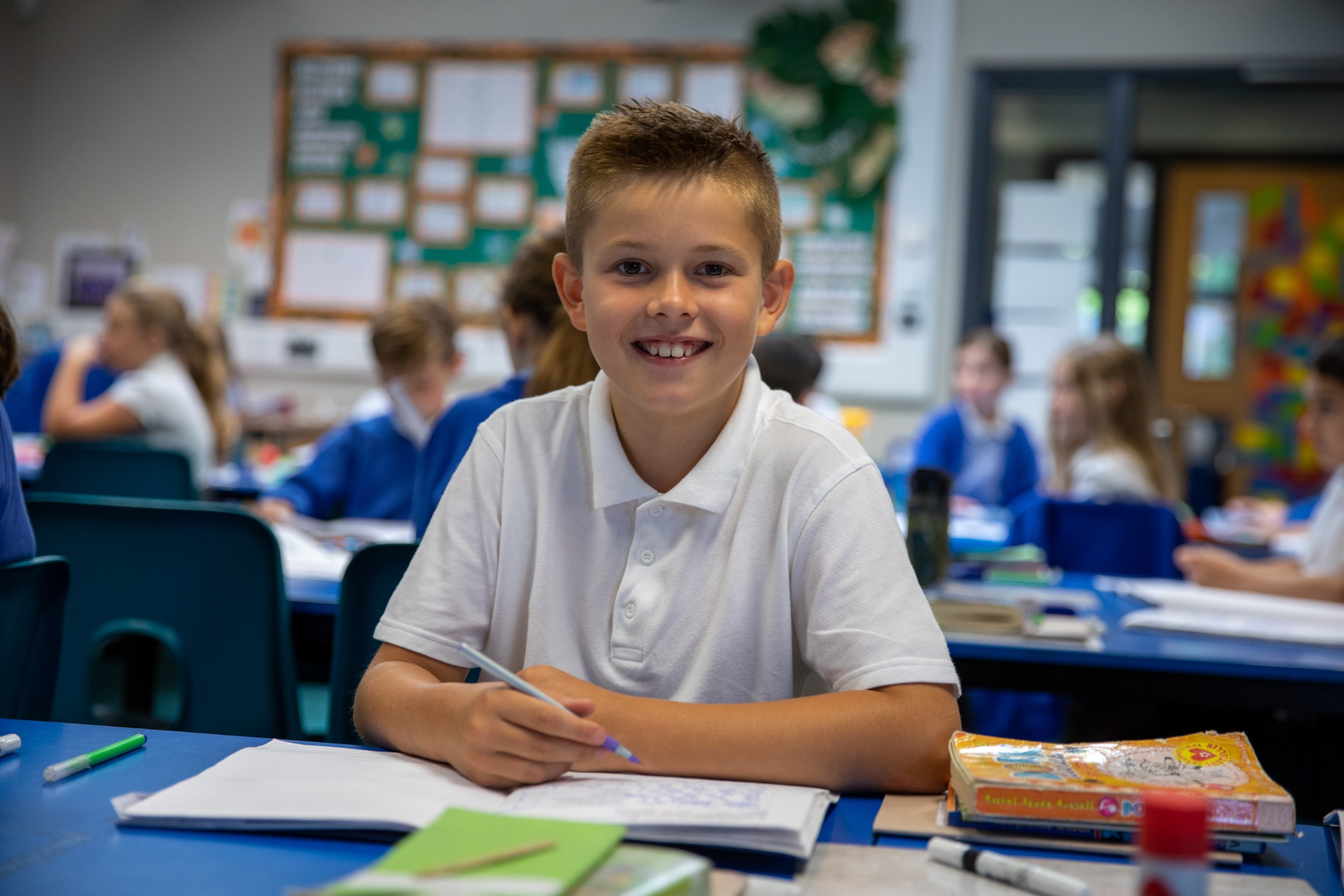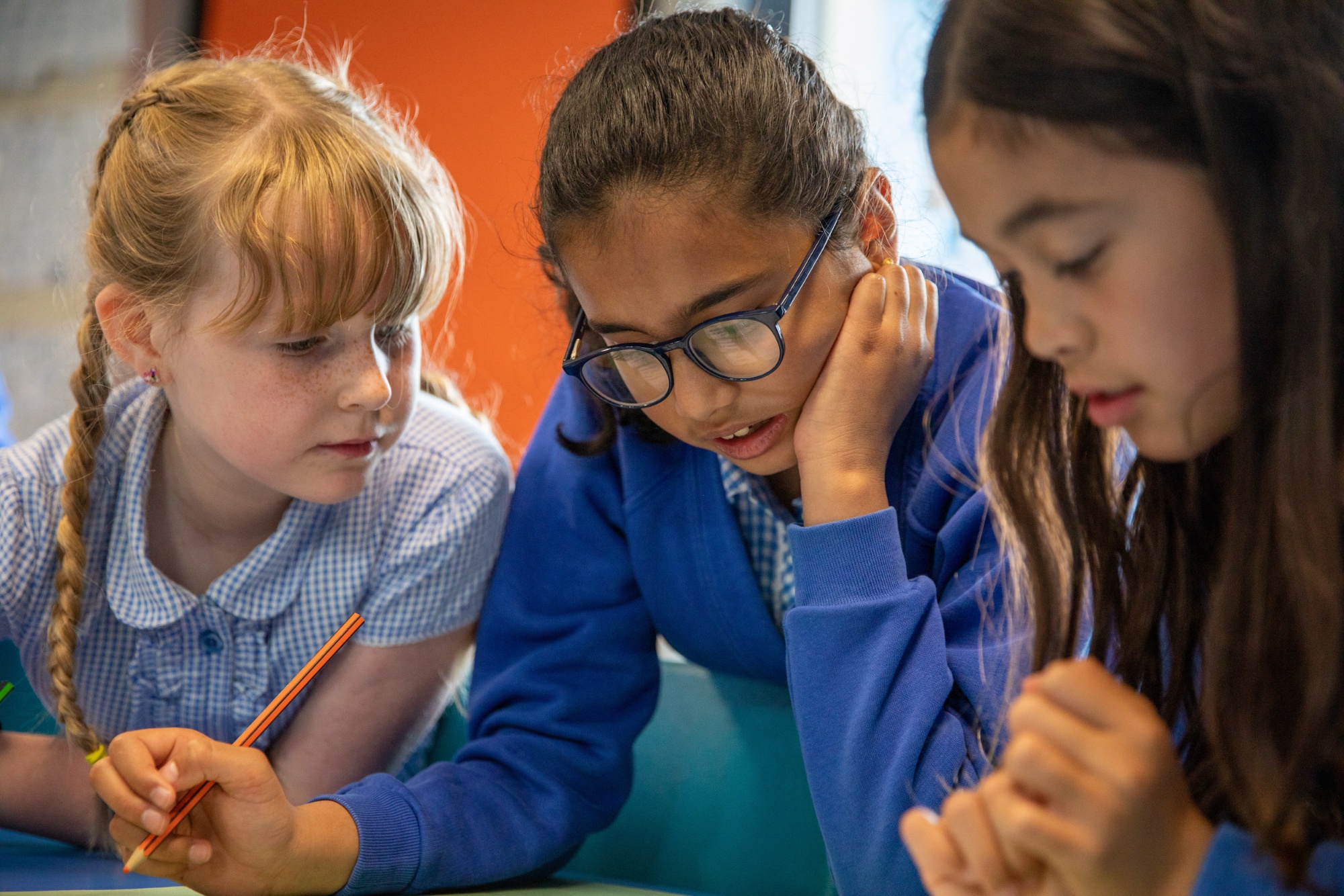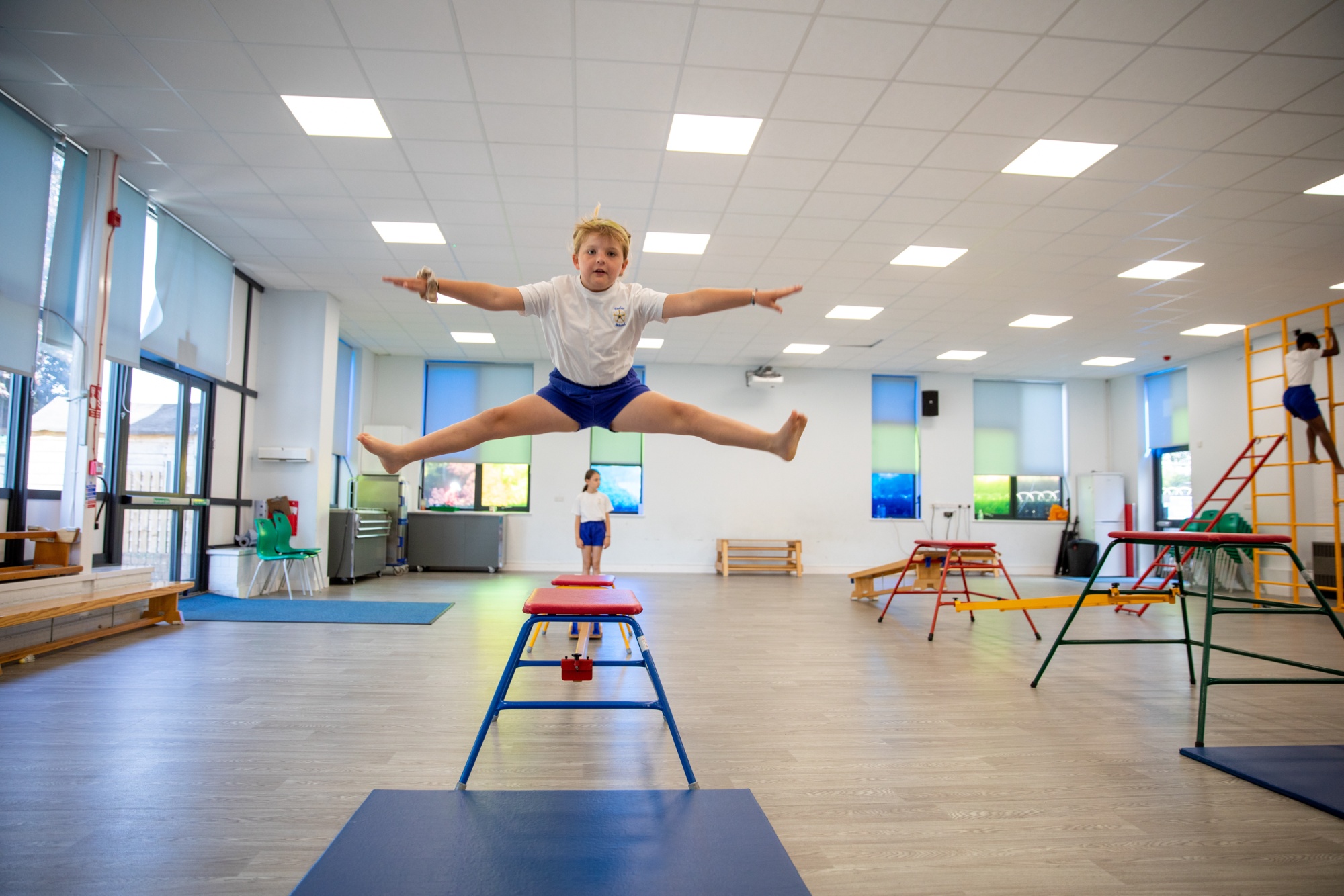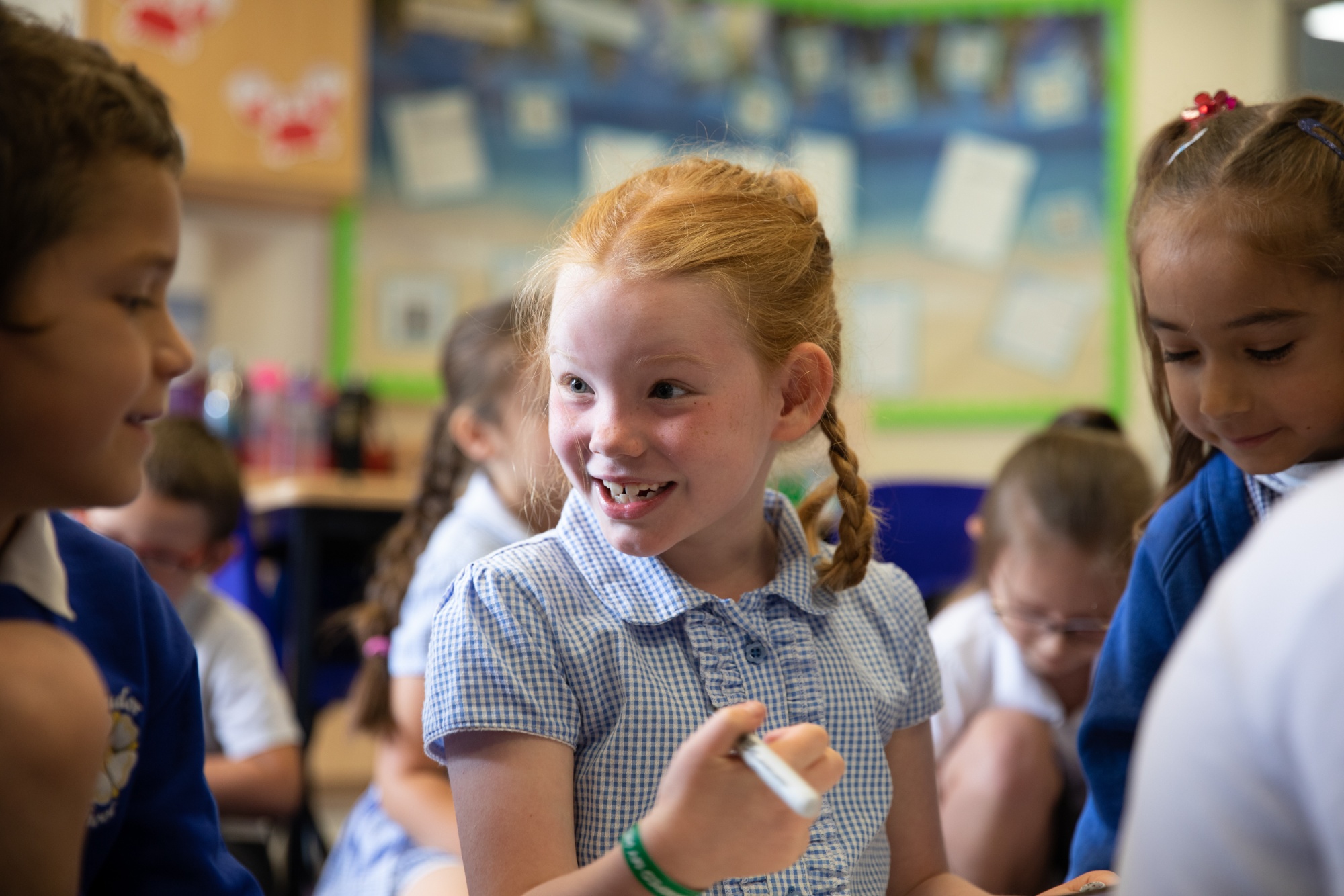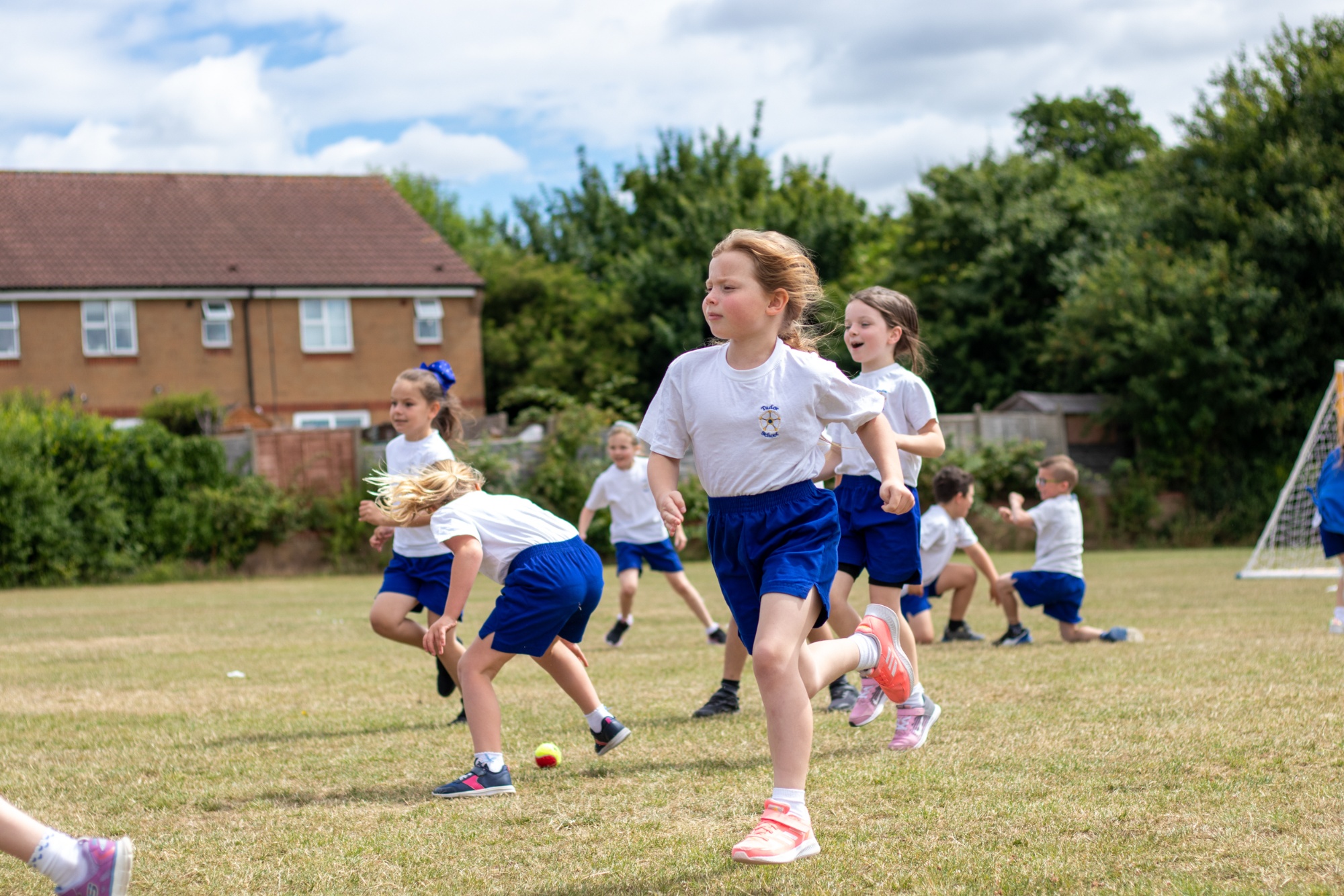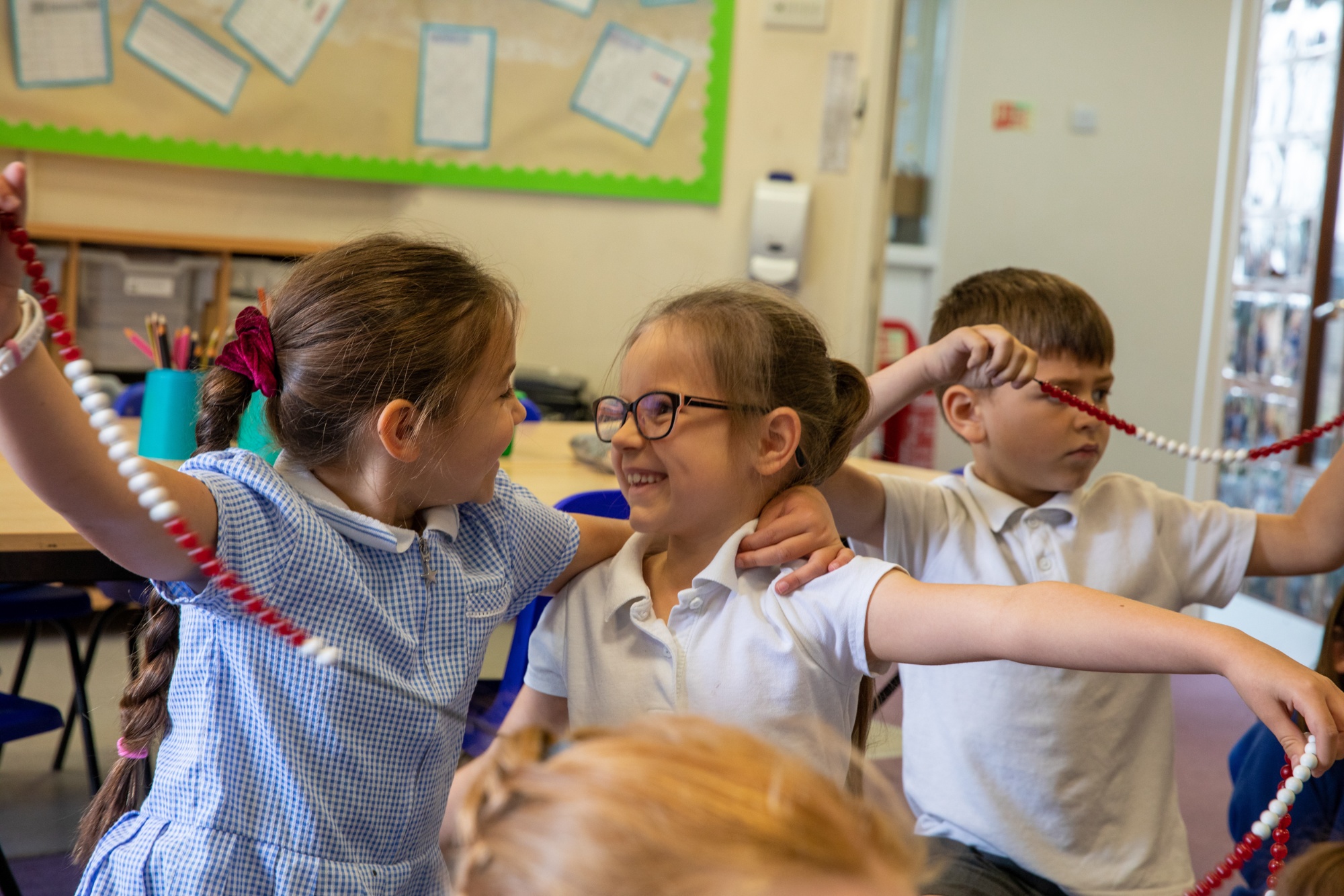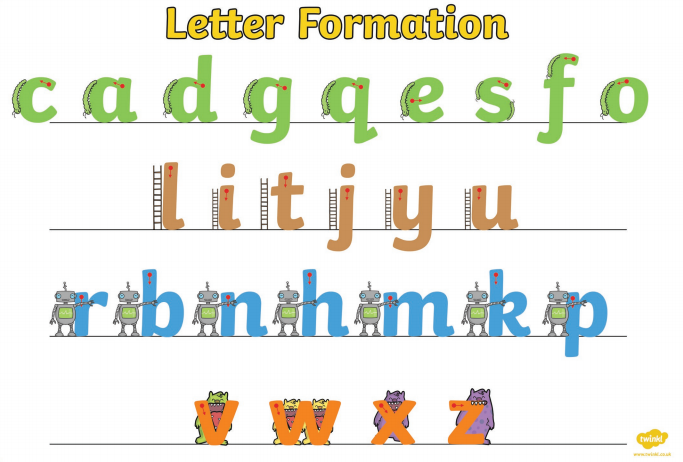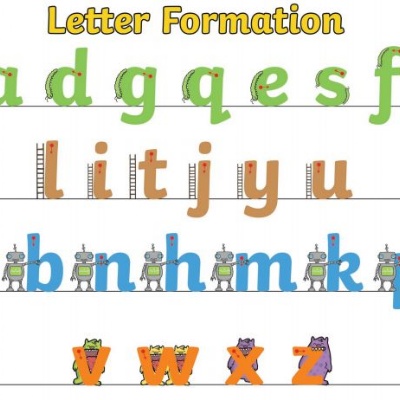
HANDWRITING (letter formation) is still important
Please practice letter formation at home. So many times we find that the children are much better spellers, than we thought, once we've deciphered their handwriting attempts. It is also often part of how we decide their overall English assessment level/grade.
Please teach your child to form their letters in the way of the picture below. The most important thing is the direction the red arrow is pointing. That is where they should be starting their letters and the direction they move in. They should not be starting from the bottom or taking their pencil off unless they are crossing their t/f or dotting their i/j. Children should not be learning pre-cursive or joining their letters until they form their letters this way (the majority of the time) in all their writing...
Here are some tips:
- Twinkl is great for giving you letter formation worksheets and advice on what the robot, caterpillar, monster and ladder pictures mean.
- Most useful tip: I get a highlighter (or light coloured) felt tip and get the children to trace over my letters. I draw a dot and arrow showing them where to start their letters. Personally I've found this accelerates children's handwriting progress the most. Then I get them to practice under my coloured versions too.
- Try to avoid it becoming a battle. There are fun ways to teach letter formation. See below for fun, practical ways and computer apps/websites.
- It's mostly about muscle memory with letter formation so get your child to practice forming their letters in a sand tray, soil in the garden, a pile of flour, pretending to write it on the walls/floors, airwrite it in the air, etc. You could make the letters in homemade playdough?
- They need to practice writing on lines regularly. This will help them understand sizing and the concept of descenders (where part of the letter goes under the lines [e.g. g, q, y]) and ascenders (where part of the letter is taller than the other letter [e.g. h, b, d, l, k, t])
- We teach a curly/loopy k in school (not a straight k.)
- Practice letter formation daily or at the very least several times a week (even if it means just discussing it while they are writing something.)
- We've sent home information ona website/app called Letterjoin: https://www.letterjoin.co.uk/log-in.html
- Here's a link for a great letter formation website/app called 'Doorway Online': https://www.doorwayonline.org.uk/literacy/letterformation/

